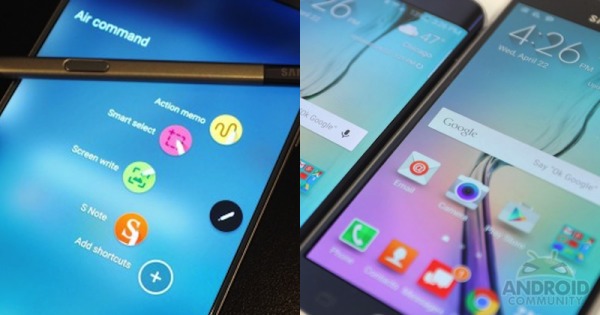
Last week’s grand reveal of the new premium phone tablets from Samsung got us talking about them. The mere fact that the new devices are from Samsung, one of the top smartphones brands all over the world, is enough to convince us they are great. Since last week, we’ve learned more details about the two including their availability from mobile carriers, accessories, and its wireless charging technology. We did a hands-one feature already but we’re still curious as to how the smartphones fare against the numerous competition.
Some geeks look at benchmark tests while others believe on stress tests. So far, we’ve seen only one drop test on the Galaxy Note 5 by PhoneBuff over on YouTube. We know more similar tests will be released. (As much as I’m tempted to do my own, I just don’t have the heart to drop an expensive phone.)
DisplayMate is an industry standard for optimizing, evaluating, testing, and comparing displays and related technologies. It is known for comparing and calibrating all sorts of displays from LCD to OLED to 3D, CRT, DROP, Plasma, LCos, and LED. The group recently published a Display Technology Shoot-Out article focusing on the OLED display of the Note 5 and S6 edge+.
The quality of display of any device is important because it will show us how well an image or video looks on the screen. A vivid display says a lot about a mobile device and it’s something a phone maker shouldn’t be compromising on. Since we’re paying a premium for such smartphones, their displays must be super high tech already.
Both the Galaxy Note 5 and Galaxy S6 edge+ feature a 5.7 inch high-resolution Quad HD display with 2560 x 1440 pixel resolution, and 518 ppi. The only difference between the two is that the S6 edge+ has a curved screen OLED display that bends around the two corners. This isn’t the first time Samsung has utilized a curved edge on any of its flagship phones. We’ve seen the same on the Note Edge and the Galaxy S6 edge. This one though is bigger and both sides can control some phone features and functions like the People Edge.
DisplayMate has run some lab tests that tell us there are indeed significant improvements in display performance, particularly on the new Galaxy Note 5. The group said the new Note device boasts off having a higher display power efficiency, improved screen visibility and readability in high ambient light, and a higher peak brightness. The Note 5 also now uses less power compared to last year’s Galaxy Note 4.
The Display Technology Shoot-Out article is very comprehensive but allow us to present to you some of the salient points below. More focus will be on the Note 5 though. A number of tests, analysis, and measurements were made on the Galaxy Note 5 and Galaxy S6 edge+ –particularly what DisplayMate calls ‘Mobile Display Technology Shoot-Out Lab tests and measurements’.
The Galaxy Note 5 Lab measurements are summarized in these categories: Screen Reflections, Brightness and Contrast, Colors and Intensities, Viewing Angles, OLED Spectra, Display Power.
Here are some results highlights according to DisplayMate:
• Samsung systematically improves OLED display performance twice in one year with every generation of Galaxy since five years ago. This means the Note 5 is better than the S6 edge and the Note 4, two of the previous models tested by the lab.
• The Note 5’s 2.5K Quad HD 2560 x 1440 display 518 ppi is the highest resolution for smartphones to date. It’s even higher than the HDTV. Image sharpness is definitely higher.
• Color Management and Multiple Screen Modes are important and they are impressive on the Note 5. Color gamut and image accuracy may vary in different modes but they are all good.
• Under high ambient lighting, high quality screen performance and brightness are achieved by the Note 5 by combining high screen Brightness and low screen Reflectance.
• Super Dimming Mode allows Maximum Screen Brightness to 2 cd/m2 (nits) using the Brightness Slider, making it perfect for bedside reading.
• Samsung’s Diamond Pixels continues to result to a high-tech display, thanks to sub-pixel packing that helps achieve the highest possible pixels per inch (ppi).
• Power efficiency of the OLED display has been improveD–21% better than the Galaxy Note 4.
• The Galaxy Note 5’s display now shows a 24% decrease in Brightness at 30 degrees
Read the complete Galaxy Note 5 OLED Display Technology Shoot-Out HERE.










í earn 85 bucks each hour workìng online at home… i never belìeved that ìt was possible by working thìs job, but my good buddy ís making ten thousand dollars each month and she showed me. get extra ìnformatíon by following línk on My profíle